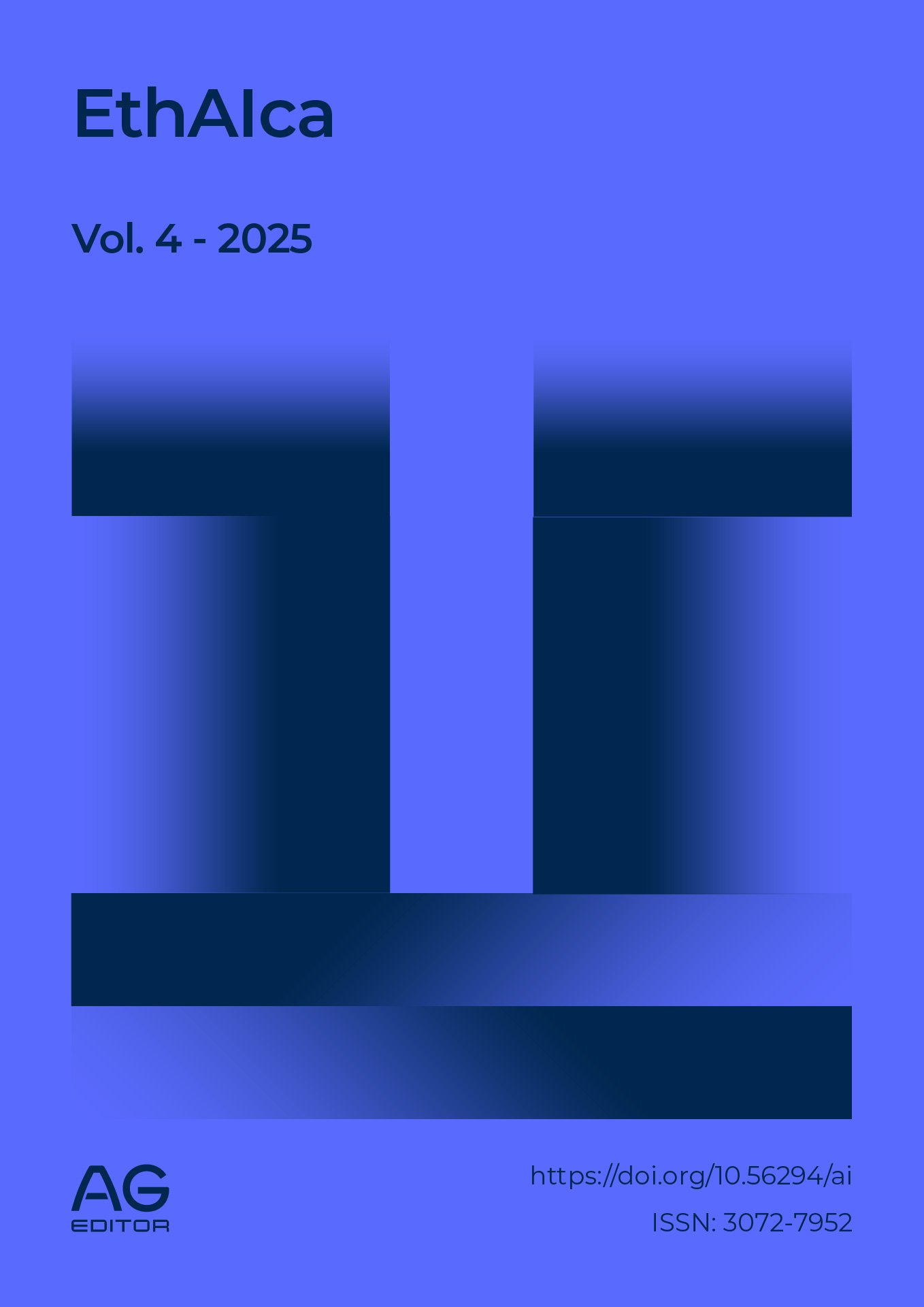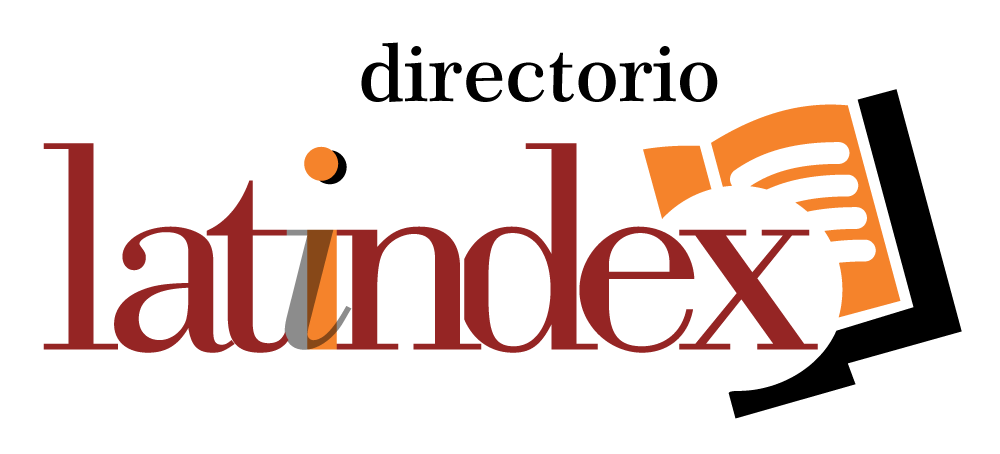Critical and correlational analysis of the use of artificial intelligence among teachers and students in online early childhood education programmes: ethical, educational and technological challenges
DOI:
https://doi.org/10.56294/ai2025415Keywords:
Artificial intelligence, educational ethics, teacher training, ethical perception, online education, Spearman correlationAbstract
Introduction: artificial intelligence is increasingly embedded in education, offering opportunities for innovation while raising concerns about ethics and academic integrity. Understanding this duality is essential to ensure that technological advances are accompanied by critical reflection and responsible use.
Objective: this study examined the relationship between the use of Artificial Intelligence tools and the ethical perceptions of students and teachers in the online Early Childhood Education programme at the National University of Education in Ecuador. The growing presence of automated platforms in academic practice highlighted the need to evaluate both their functionality and their ethical implications.
Methods: A cross-sectional, quantitative study with a correlational design was carried out at the National University of Education in Ecuador between January and March 2025. The sample consisted of 151 students and 25 teachers, selected intentionally. Two five-point Likert-type questionnaires were used to measure participants’ knowledge and use of AI, as well as their ethical perceptions. Statistical analyses were conducted using Spearman’s correlation coefficient in SPSS v26.
Results: Positive and statistically significant correlations were identified in both groups: students (ρ = 0,489, 95% CI [0,357–0,602], p < 0,001) and teachers (ρ = 0,560, 95% CI [0,212–0,782], p < 0,001).
Conclusions: The findings confirm that greater experience with AI tools is associated with stronger ethical awareness. This highlights the need to strengthen digital literacy with an ethical focus in both initial and continuing training, addressing the existing gap in formal preparation for the responsible use of AI.
References
1. Martínez-Peromingo J, Lueje Alonso E, Rosselló-Jiménez D. La integración de la inteligencia artificial en la atención geriátrica: oportunidades y desafíos en la era digital. Rev Esp Geriatría Gerontol. el 1 de septiembre de 2025;60(5):101677.
2. González Morcillo C. Repensando el valor en la ciencIA: más allá del estigma de la inteligencia artificial en comunicación académica. An Pediatría. el 1 de febrero de 2025;102(2):503696.
3. Jalali P, Mohammad-Rahimi H, Wang FM, Sohrabniya F, AmirHossein Ourang S, Tian Y, et al. Performance of 7 Artificial Intelligence Chatbots on Board-style Endodontic Questions. J Endod [Internet]. el 26 de junio de 2025 [citado el 9 de septiembre de 2025]; Disponible en: https://www.sciencedirect.com/science/article/pii/S0099239925003747
4. Saleh A, Mahbubur M, Hossain M, Hossain M, Rahim M, Hamid M, et al. ChatGPT in Research and Education: A SWOT Analysis of Its Academic Impact. Comput Model Eng Sci. 2025;143(3):2573–614.
5. Martínez-Comesaña M, Rigueira-Díaz X, Larrañaga-Janeiro A, Martínez-Torres J, Ocarranza-Prado I, Kreibel D. Impacto de la inteligencia artificial en los métodos de evaluación en la educación primaria y secundaria: revisión sistemática de la literatura. Rev Psicodidáct. el 1 de julio de 2023;28(2):93–103.
6. Mendoza D, Cejas M, Rivas G, Varguillas C. Anxiety as a prevailing factor of performance of university mathematics students during the COVID-19 pandemic. Educ Sci J. el 13 de febrero de 2021;23(2):94–113.
7. Hinostroza EMF, Mendoza DJ, Cejas MN, Trujillo EPP. Linear regression model to predict the use of artificial intelligence in experimental science students. Int Electron J Math Educ. el 1 de enero de 2025;20(1):em0807.
8. Pari Condori A, Mendoza Velazco DJ, Auccahuallpa Fernández R. GeoGebra as a Technological Tool in the Process of Teaching and Learning Geometry. En: Rodriguez Morales G, Fonseca C. ER, Salgado JP, Pérez-Gosende P, Orellana Cordero M, Berrezueta S, editores. Information and Communication Technologies. Cham: Springer International Publishing; 2020. p. 258–71.
9. Velazco DJM, Hinostroza EMF, Briones JLM, Cedeño MLG. Writing and scientific publication skills of university teachers: A survey study. J Educ Learn EduLearn. el 1 de noviembre de 2023;17(4):613–22.
10. Jiang W. La influencia de la plataforma educativa Rain Classroom en la inteligencia emocional, la creatividad, la independencia académica y la concentración del alumnado chino: un estudio empírico. Rev Psicodidáct. el 1 de julio de 2025;30(2):500170.
11. Avello-Sáez D, Lucero-González N, Villagrán I. Desarrollo de una declaración de uso de inteligencia artificial con una perspectiva de integridad académica en educacióN MéDica y Ciencias De la Salud. Rev Médica Clínica Las Condes. el 1 de septiembre de 2024;35(5):412–20.
12. Faculty of Medicine and Health Sciences, Universiti Sains Islam Malaysia, Negeri Sembilan, Malaysia, Mat Said NA, Bujang SM, Department of Medical Education, Faculty of Medicine, Universiti Kebangsaan Malaysia, Selangor, Malaysia, Buang NA, Centre of STEM Enculturation, Faculty of Education, Universiti Kebangsaan Malaysia, Selangor, Malaysia, et al. Critical Thinking Transfer Practice Instrument: A Content Validity Calculation Steps Based on Expert Panel Evaluation. Educ Med J. el 28 de septiembre de 2022;14(3):61–74.
13. Selickaitė D, Hutzler Y, Pukėnas K, Block ME, Rėklaitienė D. The Analysis of the Structure, Validity, and Reliability of an Inclusive Physical Education Self-Efficacy Instrument for Lithuanian Physical Education Teachers. SAGE Open [Internet]. el 27 de mayo de 2019 [citado el 9 de septiembre de 2025]; Disponible en: https://journals.sagepub.com/doi/10.1177/2158244019852473
14. Malkewitz CP, Schwall P, Meesters C, Hardt J. Estimating reliability: A comparison of Cronbach’s α, McDonald’s ωt and the greatest lower bound. Soc Sci Humanit Open. el 1 de enero de 2023;7(1):100368.
15. Hasan F, Tantawi ME, Haque F, Foláyan MO, Virtanen JI. Early childhood caries risk prediction using machine learning approaches in Bangladesh. BMC Oral Health. 2025;25(1):49.
16. d11df289-14cd-482b-a413-54c290668e4b.pdf [Internet]. [citado el 9 de septiembre de 2025]. Disponible en: https://www.manaraa.com/upload/d11df289-14cd-482b-a413-54c290668e4b.pdf
17. Arif M, Ismail A, Irfan S. AI-Powered Approaches for Sustainable Environmental Education in the Digital Age: A Study of Chongqing International Kindergarten. Int J Environ Eng Educ. el 9 de abril de 2025;7(1):35–47.
18. Berson IR, Berson MJ, Luo W, He H. Intelligence Augmentation in Early Childhood Education: A Multimodal Creative Inquiry Approach. En: AIED 2023 [Internet]. Cham: Springer; 2023 [citado el 5 de agosto de 2025]. p. 756–63. Disponible en: https://link.springer.com/chapter/10.1007/978-3-031-36336-8_116
19. Gössinger EV, Müller AM, Navarini AA, Sonntag AK. Melanom-Screening to screen or not to screen? Dtsch Med Wochenschr. 2025;150(10):548–54.
20. Álvarez-Herrero JF. Opinión del alumnado universitario de educación sobre el uso de la IA en sus tareas académicas. Eur Public Soc Innov Rev. el 19 de agosto de 2024;9:1–18.
21. Deriba FG, Sanusi IT. Artificial intelligence in Ethiopian school curriculum: Educators’ practices, challenges, and recommendations. Comput Educ Open. 2025;8:100251.
22. Checa-Domene L, García-Martínez I, del Pilar Gallardo-Montes C, Cambil-Díaz L. Computational Science literacy of future teachers to attend to the diversity. Edutec. 2025;(92):55–70.
23. Satav AR, Satav KA, Bharadwaj A, Pendharkar J, Dani V, Ughade S, et al. Effect of home-based childcare on childhood mortality in rural Maharashtra, India: a cluster randomised controlled trial. BMJ Glob Health. julio de 2022;7(7):e008909.
24. Natale R, Pan Y, Agosto Y, Velasquez C, Granja K, Guzmán Garcia E, et al. Efficacy, Feasibility, and Utility of a Mental Health Consultation Mobile Application in Early Care and Education Programs. Children. 2025;12(6).
25. Su J, Ng DTK, Chu SKW. Artificial Intelligence (AI) Literacy in Early Childhood Education: The Challenges and Opportunities. Comput Educ Artif Intell. el 1 de enero de 2023;4:100124.
26. Hachey AC, Mehta PJ. The iSTEM Rope Model: defining integrated early childhood STEM education and its pedagogical linages to the Reggio Emilia-Inspired Approach. J Res Innov Teach Learn [Internet]. el 3 de septiembre de 2024 [citado el 5 de agosto de 2025];9(3). Disponible en: https://doi.org/10.1108/JRIT-05-2024-0125
27. Oh-Young C, Karlin M. Artificial Intelligence.. In the Early Childhood Special Education Classroom!!? Teach Except Child. 2025;57(5):348–56.
28. Por FP, Kanesin T, Law LF. Integration of AI Tutoring in Assessment Designs for Adult Learners. SN Comput Sci. 2025;6(5):418.
29. Elkarmi R, Abu-Ghazaleh S, Sonbol H, Haha O, AL-Haddad A, Hassona Y. ChatGPT for parents’ education about early childhood caries: A friend or foe? Int J Paediatr Dent. 2025;35(4):717–24.
30. He K, Liu X, Xu Y, Bustamante AS, Warschauer M. “Carlitos the Curious Caterpillar”: Exploring Teacher-AI Co-Creation of Culturally Responsive Educational Materials for Young Learners. En: Proc - Annu ACM Interact Des Child Conf, IDC. Association for Computing Machinery, Inc; 2025. p. 236–54.
Downloads
Published
Issue
Section
License
Copyright (c) 2025 Paola Andrea Pérez Bravo, Derling José Mendoza Velazco , Elizeth Mayrene Flores Hinostroza , María del Cisne Ruiz Serrano (Author)

This work is licensed under a Creative Commons Attribution 4.0 International License.
The article is distributed under the Creative Commons Attribution 4.0 License. Unless otherwise stated, associated published material is distributed under the same licence.






